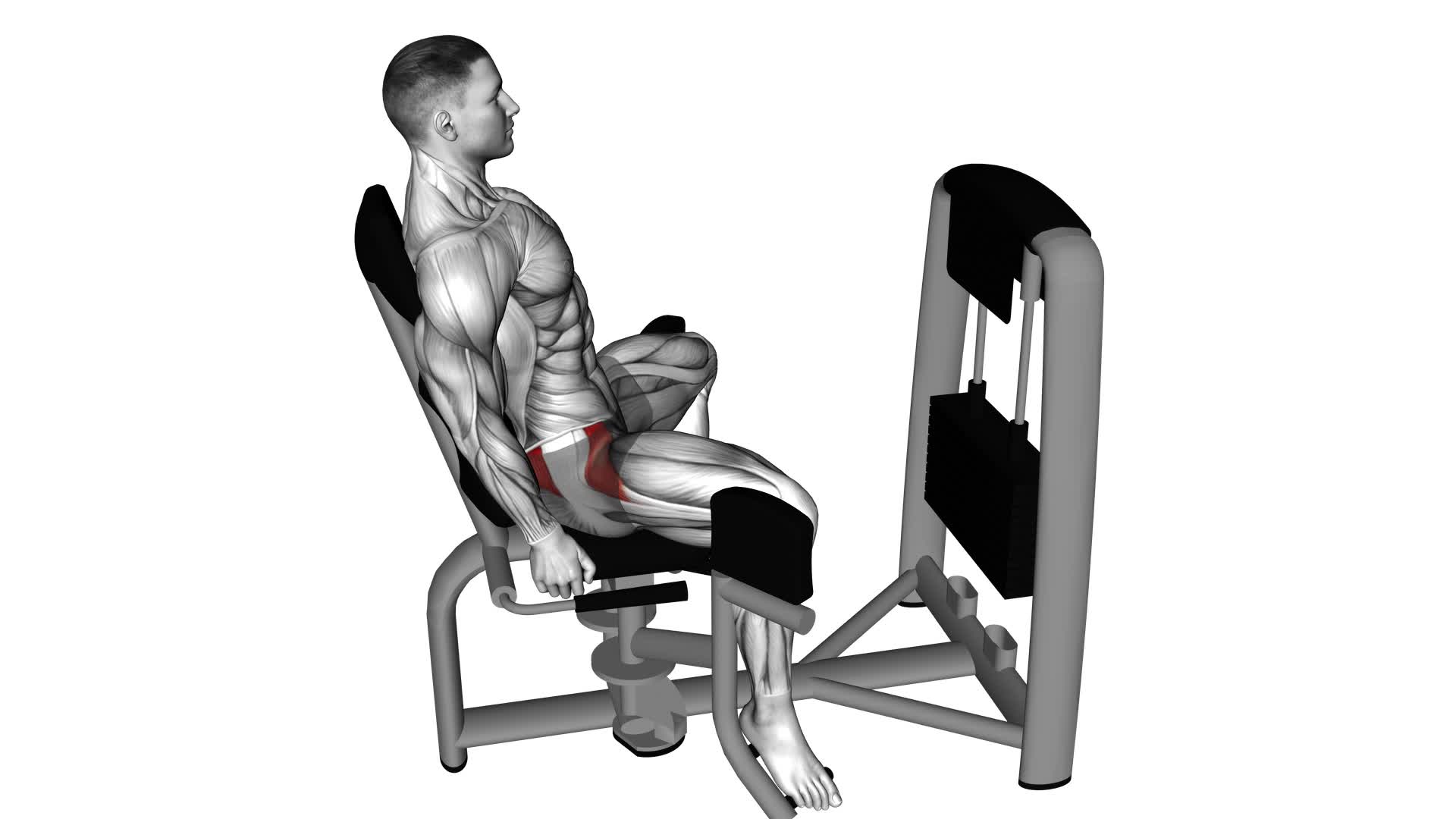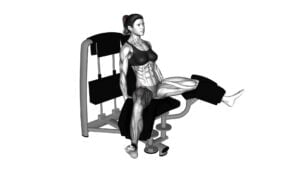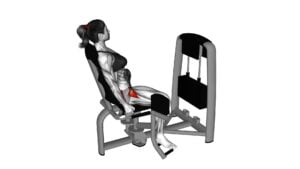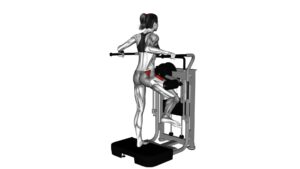Lever Seated Hip Abduction – Video Exercise Guide & Tips

Looking to strengthen your hip muscles? Check out this video exercise guide and tips for Lever Seated Hip Abduction.
Watch This Exercise Video
Learn the proper technique, avoid common mistakes, and get valuable tips for maximizing your results.
Whether you're a beginner or advanced fitness enthusiast, there are variations and progressions to suit your needs.
Get ready to sculpt and tone your hips with this effective exercise. Let's get started!
Key Takeaways
- Lever seated hip abduction targets and strengthens hip abductor muscles.
- Proper technique is important to avoid common mistakes and maximize results.
- Lever seated hip abduction improves hip stability, posture, and overall lower body strength.
- Variations and progressions can be incorporated to increase the challenge and target different muscles.
Benefits of Lever Seated Hip Abduction
To fully understand the benefits of lever seated hip abduction, it's important to realize that this exercise targets and strengthens your hip abductor muscles. Hip abduction exercises, such as the lever seated hip abduction, are specifically designed to work the muscles responsible for moving your leg away from your body. By performing this exercise regularly, you can effectively strengthen and tone your hip abductor muscles, which can improve your overall hip stability and function.
Strengthening these muscles can also help prevent injuries and enhance your performance in activities that require lateral movements, such as running, jumping, and side-to-side movements in sports like basketball or tennis. Additionally, strong hip abductor muscles can contribute to better posture and balance.
By incorporating lever seated hip abduction into your workout routine, you can reap the benefits of strengthening your hip muscles and improving your overall lower body strength and stability.
Now that you understand the benefits of lever seated hip abduction, let's move on to the proper technique for performing this exercise.
Proper Technique for Lever Seated Hip Abduction
To perform lever seated hip abduction with proper technique, sit on the machine and adjust the lever so that it rests just above your knees. This exercise is an effective way to strengthen your hip muscles and improve stability. Start by placing your feet flat on the footrests and gripping the handles for support.
Engage your core and maintain an upright posture throughout the exercise. Slowly push your knees outwards, against the resistance of the machine, until your legs are slightly wider than shoulder-width apart. Hold this position for a brief pause, then slowly return your legs back to the starting position. Be sure to keep the movement controlled and avoid any jerking or swinging motions. Remember to breathe steadily throughout the exercise.
Proper form and technique are crucial to maximize the benefits of hip abduction exercises and hip strengthening techniques. By maintaining proper alignment and control, you can effectively target the muscles in your hips and avoid unnecessary strain or injury.
Now, let's move on to the next section and explore some common mistakes to avoid during lever seated hip abduction.
Common Mistakes to Avoid
To avoid common mistakes during lever seated hip abduction, make sure to not let your knees cave inward while pushing against the resistance of the machine. Letting your knees collapse inward can put excessive stress on your hip joints, potentially leading to injuries. It's important to maintain proper alignment throughout the exercise to ensure effective muscle activation and reduce the risk of injury.
When performing lever seated hip abduction, focus on keeping your knees in line with your hips and ankles. This will help engage the correct muscles, primarily the gluteus medius and gluteus minimus, which are responsible for hip abduction. By keeping your knees in the correct position, you'll maximize muscle activation and minimize strain on your joints.
In addition to avoiding knee cave, it's important to maintain control throughout the movement. Avoid using momentum or swinging your legs to complete the exercise. Instead, move in a slow and controlled manner, focusing on squeezing your glutes at the top of the movement.
By avoiding these common mistakes, you can perform lever seated hip abduction safely and effectively, minimizing the risk of injuries and maximizing muscle activation.
Now, let's move on to the next section for tips on how to maximize your results.
Tips for Maximizing Your Results
To maximize your results with lever seated hip abduction, focus on maintaining proper form and increasing the resistance gradually. Here are some tips to help you improve your hip strength and increase your range of motion:
- Start with a comfortable weight: Begin with a weight that challenges you but allows you to perform the exercise with proper form. As you get stronger, gradually increase the weight to continue challenging your muscles.
- Engage your core: Keep your abdominal muscles tight throughout the exercise to stabilize your body and prevent excessive movement. This will help you maintain proper form and target your hip muscles effectively.
- Control the movement: Avoid using momentum to swing your legs in and out. Instead, focus on a slow and controlled movement, emphasizing the contraction of your hip muscles. This will maximize the effectiveness of the exercise and prevent strain on other muscles.
Variations and Progressions of Lever Seated Hip Abduction
Continuing from the previous subtopic, you can progress the lever seated hip abduction exercise by incorporating variations that target different muscles and increase the challenge. To further advance your hip abduction training, there are a few advanced exercises and equipment options you can consider.
One variation to try is the single-leg lever seated hip abduction. Instead of performing the exercise with both legs, you'll focus on one leg at a time. This requires more stability and strength, as the working leg will have to support the entire load.
Another option is to increase the resistance by using heavier weights or resistance bands. This will add more difficulty and intensity to the exercise, challenging your muscles even further.
Additionally, you can try performing the lever seated hip abduction on an unstable surface, such as a stability ball or Bosu ball. This will engage your core muscles more as they work to stabilize your body during the exercise.
Lastly, if you have access to a cable machine, you can try the cable hip abduction exercise. Attach an ankle cuff to your ankle and stand sideways to the machine. Move your leg away from the machine, against the resistance, and then return to the starting position.
These variations and equipment options will help you take your lever seated hip abduction exercise to the next level, targeting different muscles and increasing the challenge for improved strength and stability.
Frequently Asked Questions
How Many Repetitions Should I Do for Lever Seated Hip Abduction?
To perform lever seated hip abduction correctly, it's important to know how many repetitions to do. The number of repetitions will depend on your fitness level and goals. Generally, it's recommended to start with 8-12 repetitions per set.
As you get stronger, you can increase the number of repetitions. Lever seated hip abduction is beneficial for athletes as it strengthens the hip muscles, improves stability, and enhances performance in sports that require lateral movements.
Can Lever Seated Hip Abduction Help With Weight Loss?
Lever seated hip abduction can be beneficial for weight loss. This exercise targets the muscles in your hips and thighs, helping to tone and strengthen them. While it may not directly result in significant weight loss, it can contribute to overall calorie burning and muscle building.
Lever seated hip abduction is just one exercise option, and it can be combined with other exercises like cardio and strength training to maximize weight loss potential.
Is Lever Seated Hip Abduction Suitable for People With Knee Problems?
Lever seated hip abduction can be a suitable exercise for people with knee problems. It allows you to target your hip muscles without putting excessive strain on your knees. To make it more knee-friendly, you can modify the range of motion and resistance according to your comfort level.
The benefits of lever seated hip abduction for knee pain include strengthening the hip muscles, improving stability, and relieving stress on the knees.
It's important to consult with a healthcare professional before starting any new exercise routine.
Can Lever Seated Hip Abduction Improve My Balance?
Lever seated hip abduction can definitely improve your balance.
By focusing on strengthening your hip muscles, this exercise helps to stabilize your pelvis and improve overall stability. It targets the muscles responsible for lateral movement in your hips, which are important for maintaining balance.
Incorporating lever seated hip abduction into your exercise routine can help you develop better balance and stability, which is essential for everyday activities and preventing injuries.
How Long Does It Take to See Results From Lever Seated Hip Abduction?
To see results from lever seated hip abduction, it's important to be consistent and patient. The effectiveness of this exercise can vary depending on factors such as your current fitness level and how often you perform the exercise.
It's difficult to give an exact timeframe as results may vary from person to person. However, with regular practice and proper form, you can expect to see improvements in your hip strength and stability over time.
Conclusion
In conclusion, lever seated hip abduction is a beneficial exercise for strengthening and toning the hips. By following the proper technique and avoiding common mistakes, you can maximize your results and avoid injury.
Additionally, variations and progressions can be implemented to challenge yourself as you become more advanced. Incorporating this exercise into your workout routine can help improve hip stability and overall lower body strength.

Author
Years ago, the spark of my life’s passion ignited in my mind the moment I stepped into the local gym for the first time. The inaugural bead of perspiration, the initial endeavor, the very first surge of endorphins, and a sense of pride that washed over me post-workout marked the beginning of my deep-seated interest in strength sports, fitness, and sports nutrition. This very curiosity blossomed rapidly into a profound fascination, propelling me to earn a Master’s degree in Physical Education from the Academy of Physical Education in Krakow, followed by a Sports Manager diploma from the Jagiellonian University. My journey of growth led me to gain more specialized qualifications, such as being a certified personal trainer with a focus on sports dietetics, a lifeguard, and an instructor for wellness and corrective gymnastics. Theoretical knowledge paired seamlessly with practical experience, reinforcing my belief that the transformation of individuals under my guidance was also a reflection of my personal growth. This belief holds true even today. Each day, I strive to push the boundaries and explore new realms. These realms gently elevate me to greater heights. The unique combination of passion for my field and the continuous quest for growth fuels my drive to break new ground.



